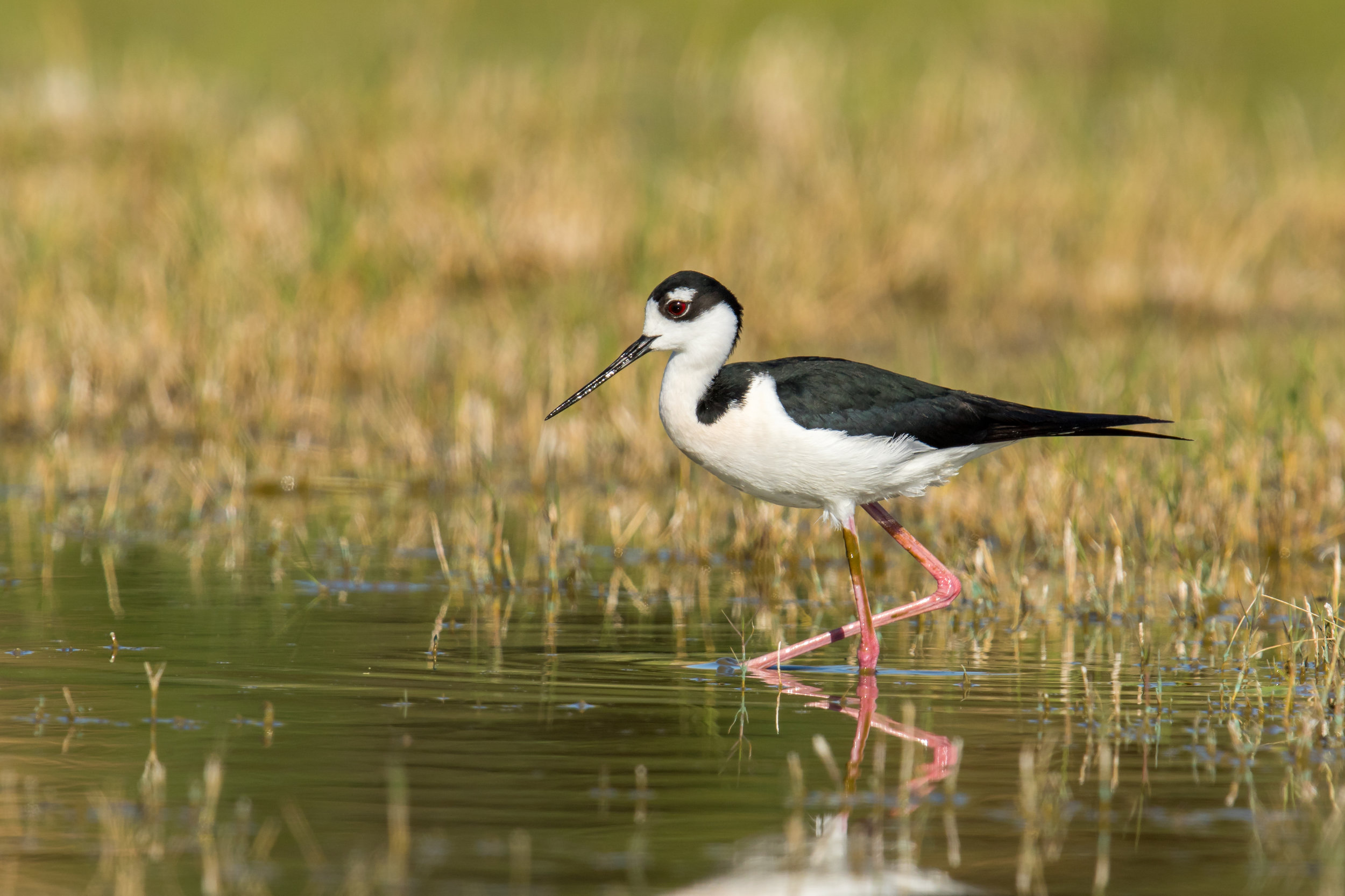Bird of the Month: Black-necked Stilt
By Andy McCormick
PC: Mick Thompson (Black-necked Stilt)
Scientific Name: Himantopus mexicanus
Length 14 in
Wingspan 29 in
Weight 6 oz (160 g)
AOU Band code BNST
Almost aristocratic in the care it takes while foraging, the Black-necked Stilt wades erectly while it carefully plucks invertebrates from a mudflat or the surface of the water. It stays away from very deep water and usually never gets its breast wet (Robinson, et al). It will make precise movements with sometimes sudden twists and turns as it pecks for prey (Dunne). Its bill is needle-thin and black.
Its strongly contrasting black and white coloration gives it a formal look that is striking against a sandy background. It coral red legs are exceptionally thin as if the bird was up on stilts and the bright red of the legs adds to the circus metaphor. The legs also provided inspiration to give the stilt its name. It is in the genus Himantopus, from the Greek, imantopus, spindle shanked bird with extremely thin legs (Holloway).
A Different Nesting Strategy
Unlike other shorebirds Black-necked Stilts are conspicuous when nesting; discarding the cryptic strategy of other shorebirds which try to hide their nests. These stilts are bold in behavior as well as in coloration. Their stately foraging behavior is quickly put aside when an intruder approaches their nest and they become loud and vigorous defenders (Bell and Kennedy). They produce an incessant series of sharp kik-kik-kik or more incessant keef-keef-keef-keef calls (Sibley).
The nest of a Black-necked Stiltis built near water and may be a simple scrape on the ground or a slight rise lined with pebbles and debris. Usually, as is typical of shorebirds, four buff colored eggs are deposited. They are heavily blotched with brown or black. Incubation is shared by both parents and, in hot climates, they may go deeper into the water to wet their belly feathers to help keep the eggs cool (Kaufman). The young leave the nest soon after hatching and are ready for a first flight in a little over a month.
Expanding Their Range
Black-necked Stilts are adaptable and have taken advantage of human-made habitats such as sewage ponds, dikes, and rice fields. They prefer fresh water but will also be found fairly commonly around salt ponds. In general stilts have expanded their nesting range northward. Their breeding in Washington was suspected in 1960 and they are now established through the Potholes Reservation and nearby wetlands. They are also successful breeders in Alberta and Saskatchewan.
However, the effects of humans have not been completely beneficial to them. Black-necked Stilts are considered an indicator species for contaminants in irrigation drain water (Robinson, et al.). In California high levels of selenium have been found in irrigated areas of the San Joaquin Valley. Selenium is suspected in reduced egg viability, deformities in embryos, and the death of chicks. Sections of the Kesterson NWR have been drained and soil has been replaced to correct this problem.
A Word about the Hawaiian Stilt
The Hawaiian Stilt (H. m. knudseni) is a subspecies of Black-necked Stilt. Hunted to near extinction until 1941, it is now protected, and has gained endangered species status just in the nick of time. Yet it continues to be challenged by human encroachment through development. Efforts are being made to eradicate the invasion of alien plants such as California grass, water hyacinth and mangrove which close open water ponds. Some scientists believe the Hawaiian Stilt deserves full species status.


